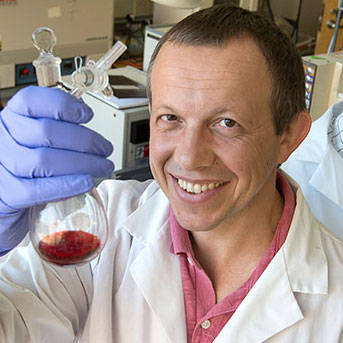
During Picasso’s blue period, the famed Spanish artist had no trouble finding an array of hues to create spectacular paintings. But that wasn’t the case for artists prior to the 1700s until a pharmacist accidentally synthesized a cheap blue pigment, changing the landscape for painters and others.
Stories like the history of the color blue and the science behind it are the crux of a course called “Chemistry in Art” taught by Florida State University Professor of Chemistry Michael Shatruk. Originally designed as an in-person course for the university’s campus in Valencia, Spain, Shatruk moved the course online when summer international programs shut down because of COVID-19.
“I try to teach chemistry while looking at different art forms,” Shatruk said. “You want to appreciate both.”
Through the class, that is geared toward non-science majors, students learn about elements on the Periodic Table and the relationship between color and light. They learn about crystalline structures and chemical bonds and how that plays a role in ceramics and pottery. And they study the chemical properties of metal and why certain metals are used in jewelry and sculptures.
Students even get a primer on the sophisticated chemical analysis used to uncover artistic forgeries.
Vice President for Research Gary K. Ostrander said the course was an inventive way to connect the dots between two seemingly disparate subject areas.
“This course shows the remarkable creativity and interdisciplinary approach of our faculty at FSU,” Ostrander said. “I don’t think many people would expect a materials researcher to be teaching an art course, but Professor Shatruk’s expertise lends itself to a deeper understanding of the materials used to create the works we see in a museum, online gallery or even wear as jewelry.”
When the course was taught last summer in Spain, Shatruk noted that they took advantage of Valencia’s rich art culture, which included both museums and street art. The current environment restricts that, but students can still access famous works of art through online galleries set up by individual museums and other resources. Students are required to write essays about pieces of art and the chemistry behind the materials used in them.
“Our students are super creative,” Shatruk said. “If you make it engaging for them, they can really build on that knowledge in their projects.”




